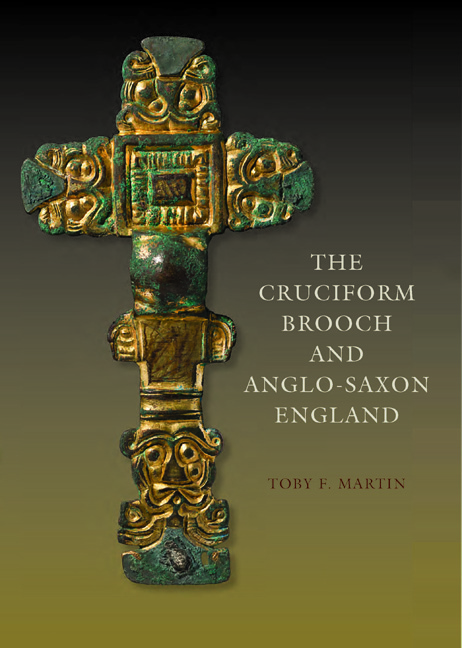Book contents
- Frontmatter
- Dedication
- Contents
- List of Illustrations
- Preface
- Acknowledgements
- 1 The Anglian Brooch par excellence
- 2 A New Typology for Cruciform Brooches
- 3 Building a Chronological Framework
- 4 Cycles of Exchange and Production
- 5 Migrants, Angles and Petty Kings
- 6 Bearers of Tradition
- 7 Cruciform Brooches, Anglo-Saxon England and Beyond
- Appendix 1 Cruciform Brooches by Type
- Appendix 2 Cruciform Brooches by Location
- Appendix 3 A Guide to Fragment Classification
- Bibliography
- Index
- Plate Section
3 - Building a Chronological Framework
Published online by Cambridge University Press: 05 May 2015
- Frontmatter
- Dedication
- Contents
- List of Illustrations
- Preface
- Acknowledgements
- 1 The Anglian Brooch par excellence
- 2 A New Typology for Cruciform Brooches
- 3 Building a Chronological Framework
- 4 Cycles of Exchange and Production
- 5 Migrants, Angles and Petty Kings
- 6 Bearers of Tradition
- 7 Cruciform Brooches, Anglo-Saxon England and Beyond
- Appendix 1 Cruciform Brooches by Type
- Appendix 2 Cruciform Brooches by Location
- Appendix 3 A Guide to Fragment Classification
- Bibliography
- Index
- Plate Section
Summary
While there is little doubt that the ordering of types in the previous chapter reflects a broad direction of chronological change from small and plain brooches to large and elaborate ones, this tells us little about which types were contemporary, how rapidly this development occurred, or if it was at an even pace. The significant extent to which components were exchanged between types suggests that many of them were contemporary, effectively constituting a pool of components from which craftspeople could copy and mix designs. While some tightly defined types probably possessed narrower chronological horizons, the more generic types most likely had longer periods of use. The purpose of building a chronological framework is to introduce phases to the typology by identifying contemporaneity between types before associating these phases with absolute dates.
Due to the abundance and rich stylistic development of cruciform brooches, their chronology is of significance. It forms an important part of the principal pre-existing Anglo-Saxon, Scandinavian and northern German chronologies. Unfortunately, this predominance means dating cruciform brooches by their grave associations with other artefacts runs a major risk of circular argument. Among the insular material, only Birte Brugmann's chronology of beads is sufficiently independent to corroborate the cruciform brooch phasing. Chiefly, however, the relative chronology will be constructed using only material that is internal to this study. Absolute dates are only attributable through chains of association, generally via Scandinavia, to continental coin-dated graves in Merovingia. These convoluted chains of association linking English, Scandinavian and Merovingian chronologies obviously carry with them a degree of risk, but other than a full rehearsal of the evidence, which is not within the remit of this book, there is little alternative. There are no means of deriving absolute dates directly from English material outside Kent until the seventh century, with the coin-dated burial in mound 1 at Sutton Hoo. However, even if a substantial and reliable set of coindated or even radiocarbon-dated burials existed, the age of the accompanying brooch at its time of burial would remain unpredictable.
- Type
- Chapter
- Information
- The Cruciform Brooch and Anglo-Saxon England , pp. 90 - 128Publisher: Boydell & BrewerPrint publication year: 2015



